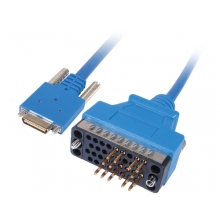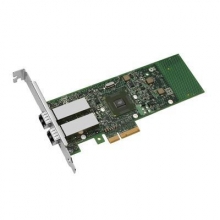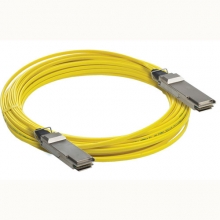- Optical Transceivers
- SFP+ Transceivers
- XENPAK Transceivers
- XFP Transceivers
- X2 Transceivers
- SFP Transceivers
- Compatible SFP
- 3Com SFP
- Alcatel-Lucent SFP
- Allied Telesis SFP
- Avaya SFP
- Brocade SFP
- Cisco SFP
- D-Link SFP
- Dell SFP
- Enterasys SFP
- Extreme SFP
- Force10 SFP
- Foundry SFP
- H3C SFP
- HP SFP
- Huawei SFP
- Intel SFP
- Juniper SFP
- Linksys SFP
- Marconi SFP
- McAfee SFP
- Netgear SFP
- Nortel SFP
- Planet SFP
- Q-logic SFP
- Redback SFP
- SMC SFP
- SUN SFP
- TRENDnet SFP
- ZYXEL SFP
- Other SFP
- FE SFP
- GE SFP
- OC3 SFP
- OC12 SFP
- OC48 SFP
- Copper SFP
- CWDM SFP
- DWDM SFP
- BIDI SFP
- Fiber Channel SFP
- Multi-Rate SFP
- SGMII SFP
- Compatible SFP
- GBIC Transceivers
- Passive Components
- Networking
- Cables
- Equipments
- Tools
- Special Offers


China’s Impact on the Global Optical Communications Industry
Headlines on continuing economic expansion in China have become a staple in the media. Forecasts on how the world will look in 20 years if the Chinese economy continues to grow at 10% per year are mind-boggling. However, the reality is much more complex than suggested by headlines. While transformation of Chinese economy over the last two decade is certainly a great achievement, the country faces numerous challenges.
China’s impact on the global optical communications industry is also remarkable. Increasing Chinese investments in networking infrastructure helped to sustain the global telecom industry during the downturns of 2001–2003 and 2008–2009. Successes of Huawei and ZTE have transformed the landscape of the networking equipment market. Significant portions of manufacturing of optical components and modules have moved to China since the telecom crash of 2001 and helped to foster numerous domestic suppliers.
Infrastructure upgrade projects will continue to be high on the Chinese government’s agenda. Providing high-speed access networks to majority of the population is part of the plan to improve the standard of living. It also offers another avenue for champion projects: the world’s fastest optical network would fit well next to China’s faster train. As the fastest trains travel at 400 km/hour, 400 Gbps looks like the right number for the datarate of the optical network. However, there are concerns whether investments in the high-speed trains will ever pay off and if the capacity of new train lines will be utilized fully. These concerns could be applied to the optical network as well, but networks’ utilization is more difficult to monitor than trains’.
As China’s national network system matures, slowdown in networking infrastructure deployments in China is inevitable. However, the progress made sets an example for a number of emerging economies that are likely to increase investments in networking infrastructure as their economies develop. Recognizing this trend, Chinese equipment manufacturers, lead by Huawei, are increasing focus on these developing economies that are prime for growth.
Huawei reached the number-one position in optical networking two years ago, displacing Alcatel-Lucent, and it is likely to surpass Ericsson as the largest supplier of wireline and wireless equipment this year. Despite the phenomenal growth in Huawei’s business, there are certainly limits to how dominant any company can become. Mature markets are usually dominated by three major players, creating a stable environment where a coalition of two out of the three is strong enough to block any predatory intentions that the third might have. This suggests that ZTE and Fiberhome are likely to gain share in the Chinese domestic market, and Alcatel-Lucent and Ericsson should be able to limit Huawei’s dominance globally.
Can Huawei maintain its dominance? Continuing reductions in product cost while maintaining technological competitiveness is certainly the winning strategy. As the gap in labor cost between China and the rest of the world shrinks, more emphasis will have to be placed on operational efficiency. Huawei has been known for bringing a lot of manufacturing processes in house to further reduce cost, and this approach is likely to continue. Increasing operations around the world to support a growing list of customers will certainly impact the cost structure as well. One of the most challenging aspects of maintaining the leadership for Huawei will be to develop new technology using internal R&D, which is very different from adopting technologies developed in the west. Opening up to the world by becoming a publicly traded company is another transition that the company will have to make.
Huawei is starting to source a larger percentage of components from local suppliers, stimulating their growth. However, Chinese optical component and module vendors remain smaller than western competitors. Accelink and WTD are the largest domestics suppliers in China, but their revenues remains well below sales of several western companies. Both Accelink and WTD are owned by FiberHome Group, which also owns FiberHome Telecommunications Technologies and several other subsidiaries involved in telecommunications. This ownership structure make subsidiaries dependent on group interests and limits their options for growth. Another example of such dependence is Wuxi-ZTE, which is owned by ZTE. HiSense Broadband and HG Genuine are subsidiaries of larger companies that are not directly associated with any companies involved in telecommunications. These businesses may have higher growth potential, since they are more independent, even though they rely on financial and manufacturing resources of larger parent businesses.
Continuing dominance of the western component and module suppliers is also supported by their extensive manufacturing facilities in China, making their manufacturing cost comparable to domestic vendors. The western companies have also an advantage in global presence, while Chinese suppliers are mostly selling into their own domestic market despite efforts to increase global presence. Developing business relationships with major western OEM customers requires local presence and expertise in complying with numerous qualification requirements, which is an extra expense that not many Chinese vendors are willing to incur. Since Chinese vendors have almost no advantage in manufacturing cost, other expenses related to running the business remain the only differentiators.
Another challenge faced by Chinese optical component and module vendors is the technology gap that still exists. Entering the market with low-end products, many Chinese transceiver suppliers developed expertise for making 1–3 Gbps modules, but very few of them can produce modules that reach higher data rates of 10 Gbps and above. Transition to 10 Gbps products was a big step for the western suppliers ten years ago, and this technology progressed rapidly over the last decade pushed by tough requirements imposed by powerful customers like Cisco. Chinese suppliers stayed largely out of this race, and they will have to catch up now.
One of the reasons for many Chinese vendors lagging behind in 10 Gbps technology is that many of them do not ship products to the datacom market, which is dominated by companies like Cisco. Like many other western customers, Cisco has very stringent qualification processes that are out of reach for most suppliers based in China. Also, the datacom market relies heavily on VCSEL-based products, which few Chinese vendors offer. The VCSEL-based transceiver market is dominated by Avago, EMCORE, Finisar and JDSU, which maintain internal manufacturing of VCSELs. Competing with these vendors is very difficult, because there are few other suppliers of VCSELs, but the successes of many western companies are partly based on maintaining a solid presence in the datacom market, which reached $994 million in 2010—and VCSEL-based products accounted for more than 80% of units shipped.



















































